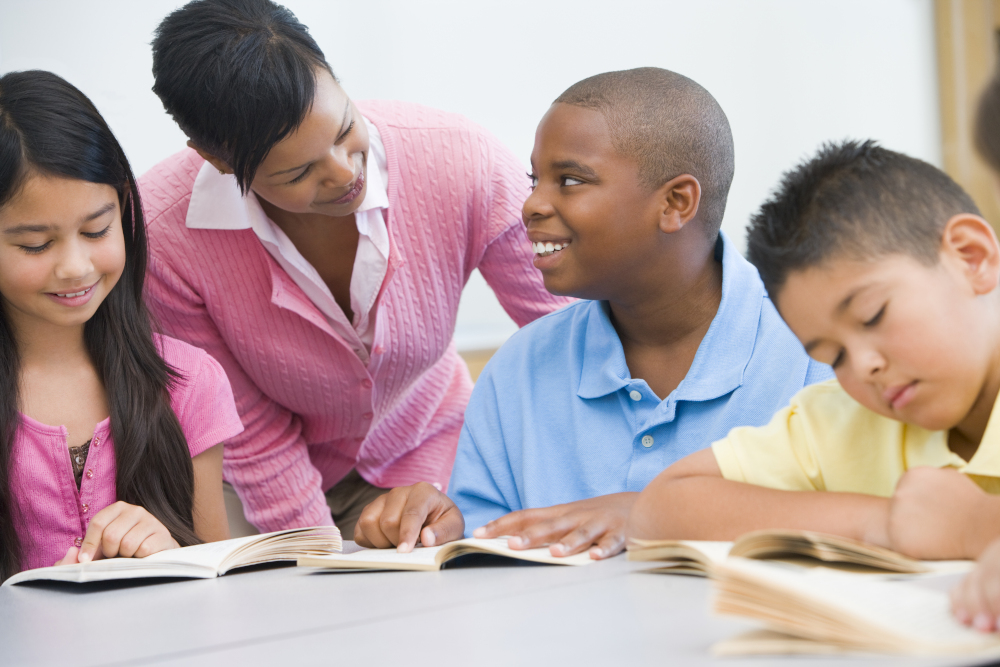공지사항
교사세미나 안내 (6/9,서울)
4차 산업혁명시대, 교육패러다임이 바뀐다!
21세기 핵심역량을 키우는 리딩교수법 세미나에
교사 여러분을 초대합니다. (선착순 마감)
자세히 보기 >>
4차 산업혁명시대, 교육패러다임이 바뀐다!
21세기 핵심역량을 키우는 리딩교수법 세미나에
교사 여러분을 초대합니다. (선착순 마감)
자세히 보기 >>
| Keeping Group Work on Track |
|---|
|
file|
2021.02.23
|
|
by Jon Edwards,
February 23, 2021 .jpg) Every language teacher knows the importance of pairwork and groupwork. These activities give students more practice using what they’ve learned to communicate. Still, many teachers feel nervous when it comes to doing pairwork and group work activities in their classroom. This is no surprise. After all, during these kinds of activities, classes can quickly go “off the rails.” Teachers can’t watch every group, so there’s no way to make sure that students are staying on task and not chit-chatting in their mother tongue or playing with their mobile phones. Besides loss of control in the classroom, there may be other issues. These kinds of activities might not fit with the ideas that students, parents, administrators, or even teachers themselves have about what is supposed to happen in a classroom. They may consider a traditional, teacher-centered model of instruction as somehow more appropriate. They may think that if students are speaking with each other without the teacher’s direct supervision, errors are likely to go unchecked, leading to the formation of bad habits (“error fossilization”). Since it isn’t obvious how students’ participation in pairwork and groupwork activities could be assessed, it may not be perceived as a valuable use of class time. However, by taking a few simple steps, you can help your students to get the important practice they need while avoiding these problems. Group students strategically  Many teachers just pair up students based on where they are sitting or let students work with their friends. However, if students in a group are at different skill levels, it is likely to lead to frustration, and they’ll probably abandon the activity. Instead, groups students based on skill level, putting stronger students together and weaker students together. You may also want to pair students according to their personalities; a more outgoing student is likely to dominate in a group of quiet students. (Tip: Make grouping students more fun by handing out cards with colors, pictures, or words on them and having students find other students with the same card.) Keep groups small  If groups are too big, it defeats the purpose of doing this kind of activity; reluctant students will more easily hide, and the amount of speaking time that each student gets will be limited. Groups should be three or four, ideally. Then, every student can have a job to do in the group, and active participation for everyone is more likely. Break a longer activity into short, manageable steps If an activity is too long or complicated, students are more likely to get off-task, especially if expectations are not clear. For each step, set a time limit and give students a reminder when they are supposed to move on to the next step. Having a clear goal (with some kind of “output” to produce, if possible) can also function to keep students focused because it creates natural accountability. (In other words, students must produce something to show they’ve been actually doing the activity.) You can provide students with a chart on the board or a handout, as below. .png) Assign roles Sometimes, activities don’t work because students just are not sure how they are supposed to contribute to the group effort. You can proactively avoid this problem by assigning roles to each member of the group. Depending on the activity, you might want to assign some of these roles: chairperson - keeps things on track and makes sure everyone is participating notetaker - records ideas and asks questions to clarify spokesperson - gives a presentation about the group’s ideas to the class encourager - prompts and supports others in the group to explain questioner - asks questions and challenges others in the group to clarify ideas  Create and distribute a rubric and give out grades For older students, especially, it may be useful to create and hand out a rubric for pairwork and groupwork activities to show them how you will be grading them. The rubric should include each step in the procedure and should include components for participation, idea development, fulfilling the objectives, etc. You may also want to include a self- and/or peer-evaluation component to the grading if your students are mature enough to handle it. Provide scaffolding Sometimes, students get off task simply because the task is too challenging or they lack the language skills to accomplish what they’re required to do. Provide scaffolding in the form of word banks or sentence starters / sentence frames so that students can refer to it if needed. This can be up on the board or on a handout. See the example above. Circulate and support  While students are doing an activity, you should be moving around the classroom and facilitating the activity. That means watching for groups that are struggling or getting sidetracked. For the most part, these kinds of activities are about practicing communication, so you shouldn’t step in to correct errors that you hear unless there is some sort of breakdown in communication. Instead, you should write down a few errors that relate to key structures you’ve recently been working on and have an error-correction session as a follow-up to the activity. Be sure not to call out individual students who have made an error as this is likely to make them reluctant to participate in the future. Instead, just write the error up on the board and ask students to correct it. I hope these ideas help you to run your pairwork and groupwork activities more smoothly. Happy teaching!
|
4차 산업혁명시대, 교육패러다임이 바뀐다!
21세기 핵심역량을 키우는 리딩교수법 세미나에
교사 여러분을 초대합니다. (선착순 마감)
자세히 보기 >>